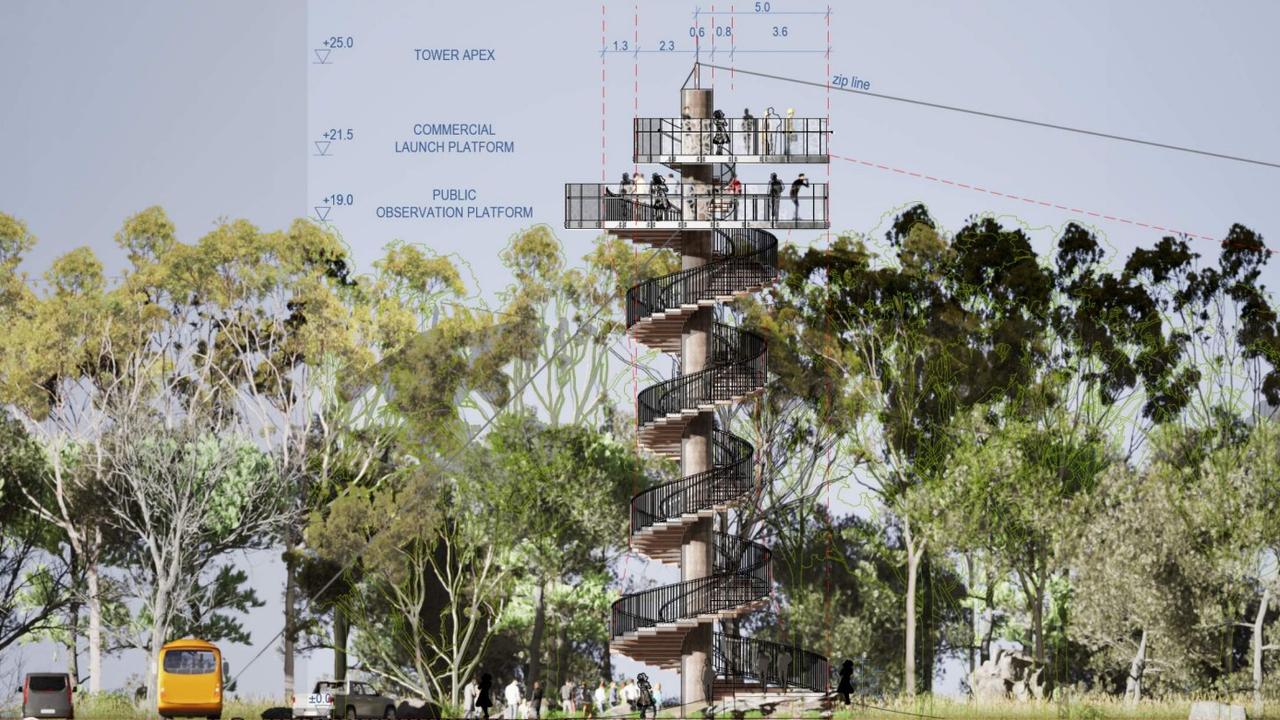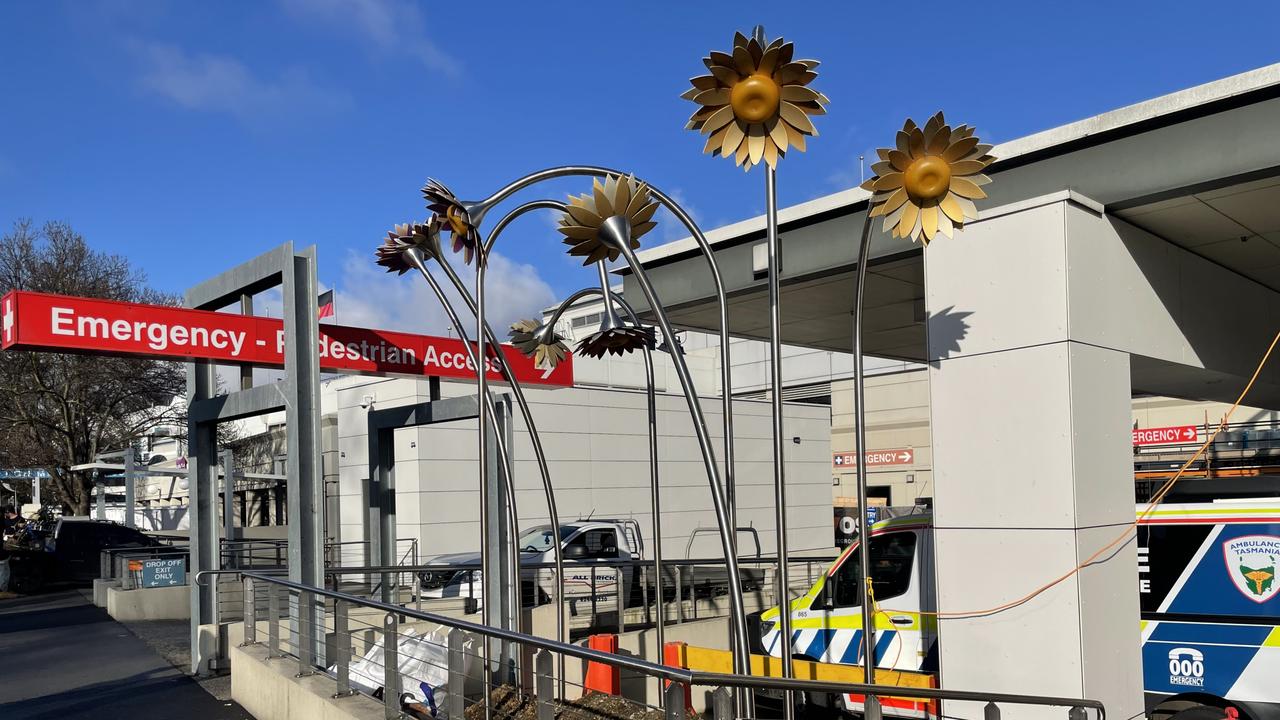What’s next for Hobart’s waste management when Hobart’s McRobies Gully landfill closes
The life of Hobart’s tip is quickly coming to an end but plans are well advanced for life after landfill. See what the plans are >>
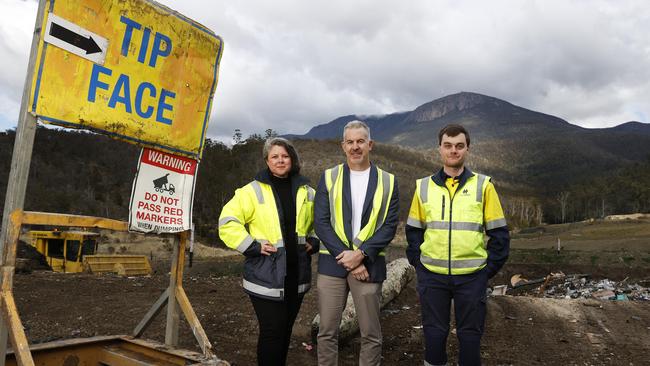
Tasmania
Don't miss out on the headlines from Tasmania. Followed categories will be added to My News.
Its closure might still be six years away but preparations are well advanced for life after landfill in Hobart.
By 2030, the landfill at the McRobies Gully Waste Management Centre – known by most as ‘the tip’ – is expected to reach capacity and the site as a whole will shift its focus entirely to resource recovery, which is the practice of separating materials from waste that can be recycled or reused.
About 25,000 tonnes of general waste is disposed at the McRobies Gully landfill in South Hobart every year. Once it’s closed, this waste will instead be transported from the tip to an alternative landfill site outside the municipality that is still yet to be identified by the Hobart City Council.
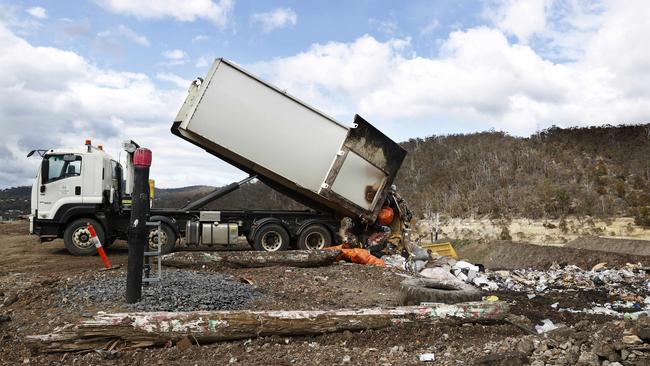
Landfills are bad for the environment, releasing methane – one of the most damaging greenhouse gases – into the atmosphere and therefore contributing to climate change.
In fact, methane traps more than 28 times as much heat in the atmosphere as carbon dioxide and waste currently accounts for about 10 per cent of Hobart’s emissions.
Hobart City Council program manager waste and circular economy Fiona McAlpine said the first step in transforming the McRobies Gully site would be the addition of a second weighbridge, where customers will be able to separate out their recyclables, such as glass, timber, and cardboard, paying only for the materials they discard via the waste transfer station.
“We’ve got to get that right first and then, because the council is committed to honouring the earlier decision to cease the landfill operation by 2030 … we need Hobartians to separate at the source, which means in their own homes,” she said.
Ms McAlpine said existing infrastructure at the tip would be enhanced in order for it to be able to recover more recyclable materials and improvements to traffic flow would also be required.
The average Hobartian generates 738kg of waste to landfill per year and the council is hoping its new waste management strategy – for which a draft is expected to be endorsed by the end of the year – will work to bring that number down.
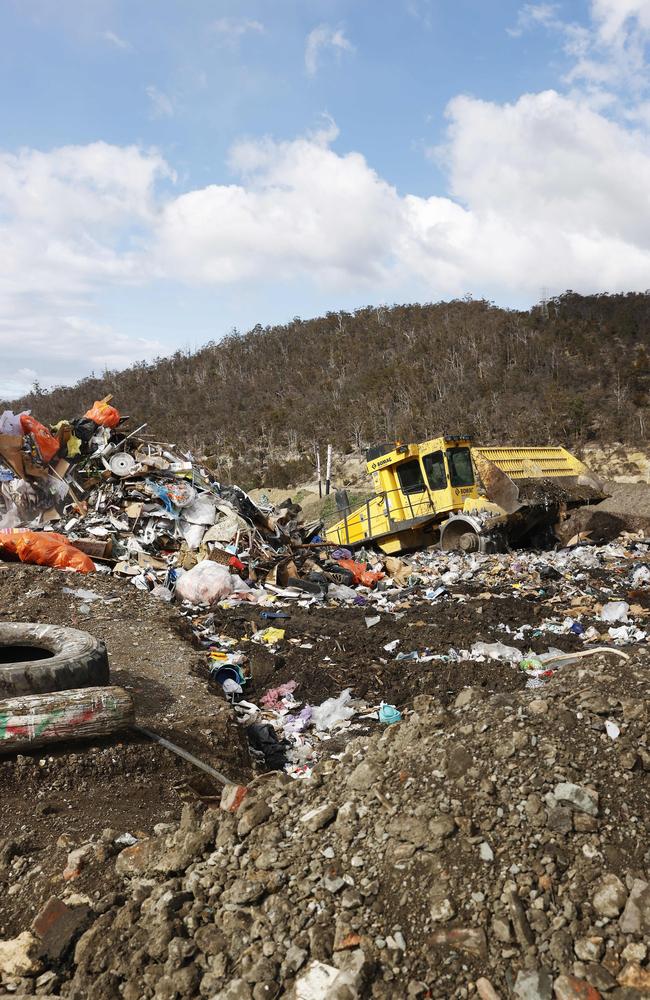
“It’s the organic matter that is decomposing in the landfill that is generating those really high methane levels and those emissions,” Ms McAlpine said.
“And so the best thing that Hobartians can do is start to use FOGO (food organics and garden organics) bins more and get that organic matter out of their rubbish.”
The state government’s landfill levy, designed to encourage a transition to the circular economy, is currently set at $44.88 per tonne of waste and is set to increase on July 1, 2026.
Hobart Lord Mayor Anna Reynolds said the council had made sustainable waste management a core focus, implementing a zero waste goal and a nation-leading ban on single-use plastics.
“There are so many good reasons for reducing food waste and keeping it out of landfill, with climate change being one very important reason,” she said.
Ms Reynolds said the city’s Climate Ready Hobart strategy was aiming to cut 95 per cent of residential organic waste from going to landfill by 2030.
Currently, only 46 per cent of Hobart’s waste is being diverted from landfill through composting or recycling.
Hobart City Council CEO Michael Stretton said the cost of closing the landfill was still being determined but that the council had long been budgeting for it.
“You still have to manage [landfills] for many, many years because of the methane that will be continually released from the site,” he said.
“Some sites have moved to having solar farms and those sorts of opportunities, in conjunction with the methane capture and turning that to energy. So there’s opportunities for further energy production on the site.”
Mr Stretton said the closure could also open up the potential for recreational uses at McRobies Gully.
As for where Hobartians’ non-recyclable waste will be transported from 2030 onwards, the Copping Waste Precinct is a potential candidate, according to the CEO.
“[It’s] an extraordinarily long-life and well-managed facility that services a lot of the councils down here already,” he said.
HOBART’S WASTE BY THE NUMBERS:
Waste currently accounts for about 10 per cent of Hobart’s carbon emissions
About 25,000 tonnes of general waste disposed at McRobies Gully landfill every year
Average Hobartian generates 738kg of waste to landfill per year
Approximately 46 per cent of Hobart’s waste is diverted from landfill via composting or recycling
Organics represent about 60 per cent of kerbside waste bin contents
About 30 per cent of waste delivered to McRobies Gully landfill is organic
Recycling is the answer
Peter McGlone hasn’t used his kerbside bins for 13 years and says most people can drastically reduce the rubbish they produce “as quick as a flash”.
The Tasmanian Conservation Trust CEO said it was “diabolically easy” to recycle and reuse materials and dispose of organic materials via a compost bin.
“A lot of people put stuff like food – that should not be there – in rubbish bins or recycling bins,” he said.
“By stopping that, you can probably halve your amount of rubbish just like that. Most people just put rottable stuff in the bin because they’ve never got around to organising a compost bin, or some other way of getting rid of their organic waste.”
Mr McGlone said he was not a “freaking hero” for reducing his waste production and that anyone could do it if they applied themselves.
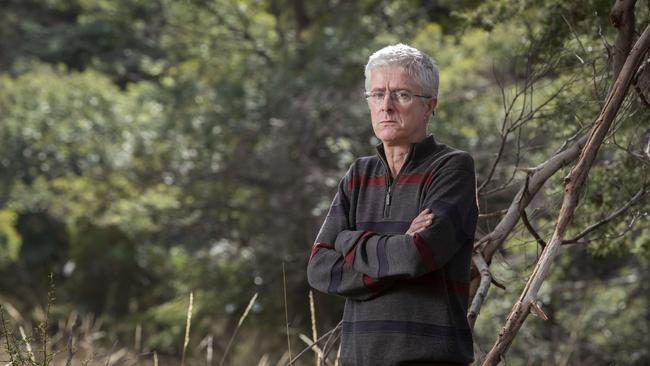
He said the Hobart City Council’s move to close its landfill at McRobies Gully by 2030 was a positive one and there were “huge advantages” to diverting the city’s non-recyclable waste to a regional site like Copping.
Local Government Association of Tasmania CEO Dion Lester said the state’s resource recovery rate sat at 53 per cent, below the national average of 63 per cent.
“While there is a lot already happening in Tasmania around the circular economy, much of the work is happening in isolation because there is no central plan or co-ordinated action,” he said.
“The state government and new Waste and Resource Recovery Board [need] to clearly outline their road map for transitioning to this different economic system.”
More Coverage
Originally published as What’s next for Hobart’s waste management when Hobart’s McRobies Gully landfill closes




